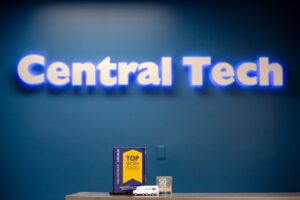The legislature approved much-needed pay raises for teachers and school support staff this year. Sen. Rob Standridge and other legislators are growing concerned after hearing plans by multiple districts that want to give their administrators pay raises meant for support staff. The legislators want to ensure the pay raises are dispersed correctly and want to encourage the public to hold local school boards and administrators accountable as these decisions are made in the next few weeks and months.
“I’m extremely concerned that districts are wanting to use the support staff raises for administrative staff,” said Standridge, R-Norman. “The intent of House Bill 1026 was to provide a raise for those support staff who typically have the lowest pay in a district, who work closely with students during the nine months of school, including cafeteria workers, janitors, building assistants and secretaries. It was definitely not intended for school district’s highest paid employees, which are administrators.”
To protect public school employees from possible retribution, Standridge has agreed not to name the districts in question but only wants the public to be aware that this has been discussed so they can stop any misuse of taxpayer funds.
On April 3, Gov. Fallin signed HB 1026xx into law to provide a raise for school support personnel including building aids, cafeteria workers, building assistants, janitors, building secretaries and paraprofessionals.
On March 29, Gov. Fallin signed HB 1023xx providing an average $6,100 to all certified school personnel including teachers, nurses, counselors, principals and administrators except the district superintendent.
“The legislation for support personnel was never intended for employees within school administration, most of which are some of the highest paid employees in a district, and many within administration are also certified allowing them to already take advantage of the certified school personnel raise,” said Standridge. “Any decisions on how these monies would be used or misused are decided by local school boards and administration, and I would encourage citizens to contact those responsible and ensure these dollars are going where the legislature intended.”
Standridge explained during the walkout that the two most repeated needs expressed by educators and their supporters were for smaller classroom sizes and more pay for support staff. He went on to point out that there is a lot of confusion about who decides when and how dollars are spent within a school district.
The state legislature appropriates funds (this year it was $2.9 billion) to the State Department of Education (SDE). That agency then distributes funds to the various school districts based on various calculations. It is then the responsibility of the local school boards and administrators to decide how to utilize those funds. While some funds have to be spent on certain areas such as building improvements, others can be spent however the school board and superintendent see fit. These are and should be local decisions, including pay rates for their employees.
“Some in the public think that the legislature controls how education funds are spent but this isn’t the case. I think it was eye opening for teachers and parents from different districts to hear stories of how other districts spent their unencumbered funds on Chromebooks, new furniture, raises for teachers and other staff and so forth while their school boards were using funds to raise superintendent or administrative pay,” said Standridge. “The bottom line is that it is the local school boards and administrators who make the majority of financial decisions as to how to spend their funds and it’s up to local citizens to hold them accountable for those decisions.”
Standridge went on to say that he and his colleagues have also heard of various administrators being awarded increased salaries in the last few years when schools are struggling financially and going to four-day weeks.
“Many who came to the walkout believed that the legislature set all school salaries but it only sets the minimum salary schedule for teachers not the pay for superintendents, administrators or support staff. Those salaries are set by the local school boards, in fact, many districts elect to pay their teachers significantly more than the minimum salary for teachers, which is certainly within their power, and they also decide how a majority of state and federal dollars are to be spent in their districts,” said Standridge. “During the recent very difficult economic times some districts, while moving to four-day school weeks and struggling to pay their bills, elected to give their administrators tens of thousands of dollars in raises, a practice that needs to be controlled locally and I would encourage citizens to watch this closely in their school districts.”
More information about the school certified personnel and support staff raises can be found on the SDE website.
“I’d urge Oklahomans to attend school board meetings and see how your tax dollars are being spent. Your school and your school district are local to you, and although the focus has been on state government and teacher unions, it is very important to know how your tax dollars are spent in your community.”











